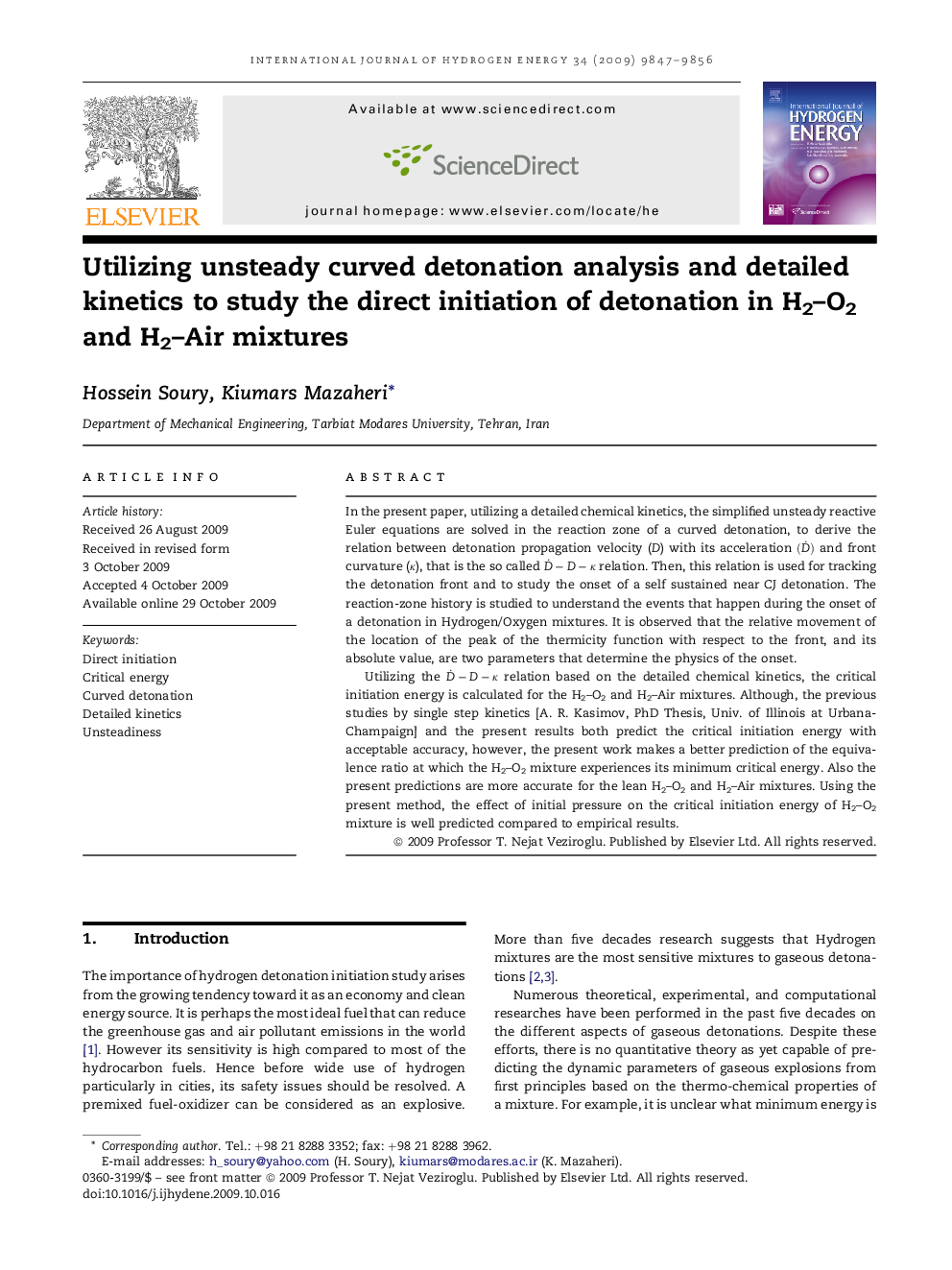| Article ID | Journal | Published Year | Pages | File Type |
|---|---|---|---|---|
| 1278215 | International Journal of Hydrogen Energy | 2009 | 10 Pages |
In the present paper, utilizing a detailed chemical kinetics, the simplified unsteady reactive Euler equations are solved in the reaction zone of a curved detonation, to derive the relation between detonation propagation velocity (D ) with its acceleration (D˙) and front curvature (κ ), that is the so called D˙−D−κ relation. Then, this relation is used for tracking the detonation front and to study the onset of a self sustained near CJ detonation. The reaction-zone history is studied to understand the events that happen during the onset of a detonation in Hydrogen/Oxygen mixtures. It is observed that the relative movement of the location of the peak of the thermicity function with respect to the front, and its absolute value, are two parameters that determine the physics of the onset.Utilizing the D˙−D−κ relation based on the detailed chemical kinetics, the critical initiation energy is calculated for the H2–O2 and H2–Air mixtures. Although, the previous studies by single step kinetics [A. R. Kasimov, PhD Thesis, Univ. of Illinois at Urbana-Champaign] and the present results both predict the critical initiation energy with acceptable accuracy, however, the present work makes a better prediction of the equivalence ratio at which the H2–O2 mixture experiences its minimum critical energy. Also the present predictions are more accurate for the lean H2–O2 and H2–Air mixtures. Using the present method, the effect of initial pressure on the critical initiation energy of H2–O2 mixture is well predicted compared to empirical results.
